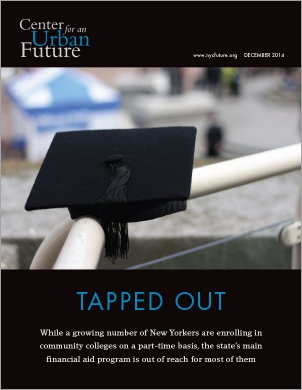Report - December 2014
Tapped Out
While a growing number of New Yorkers are enrolling in community colleges on a part-time basis, the state’s main financial aid program is out of reach for most of them.
by Christian González-Rivera
Tags: economic opportunity workforce development human capital low income higher education community colleges



